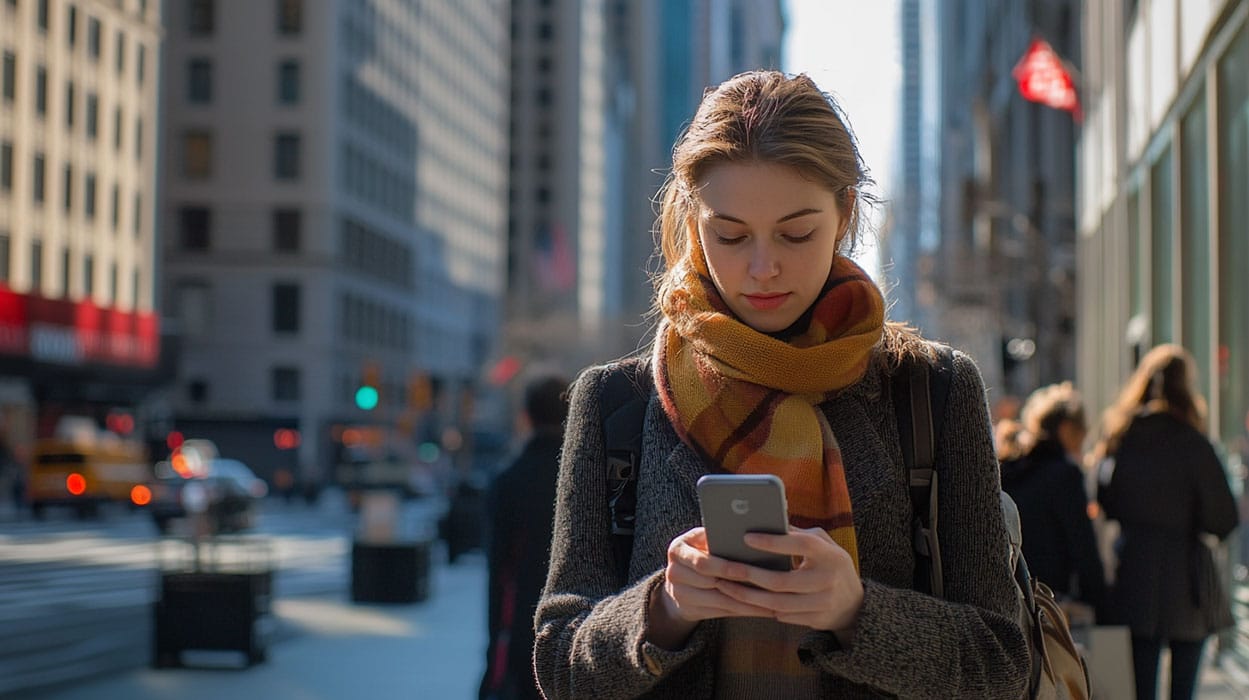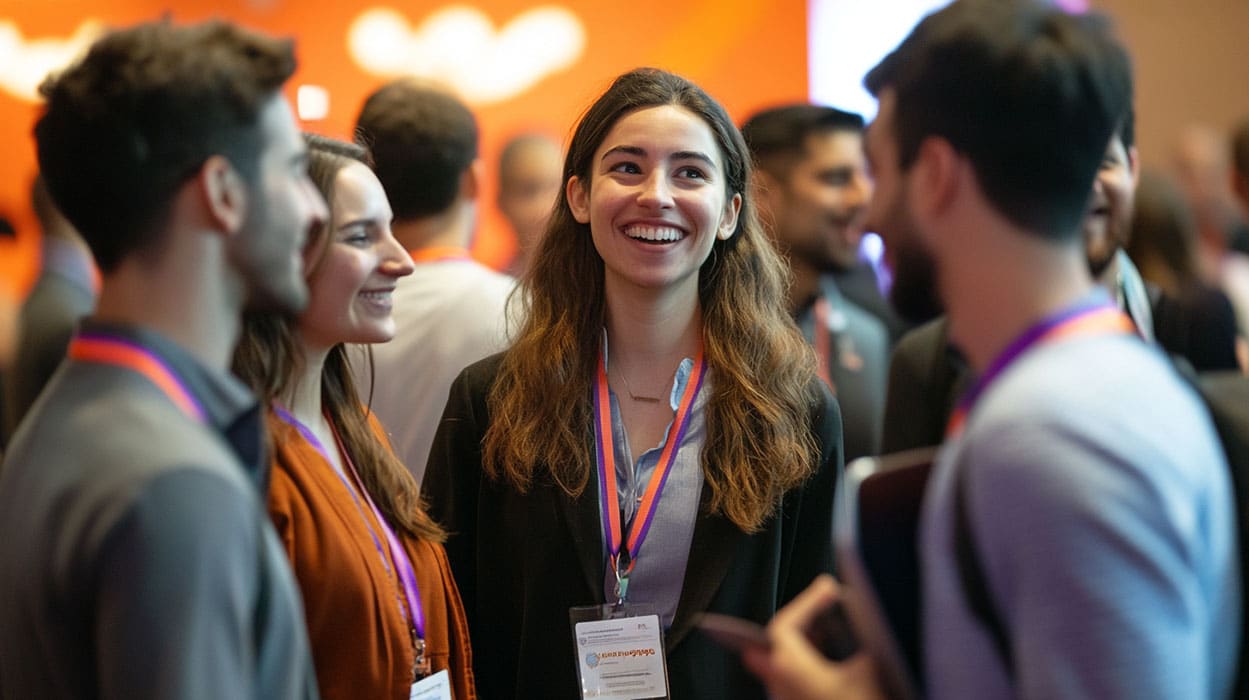Have you ever wondered how some events capture your attention and leave a lasting impression? The secret often lies in the power of graphic design. Effective design is crucial in transforming ordinary events into extraordinary experiences, from eye-catching social media posts to stunning signage.
When used strategically, graphic design can elevate your event promotions, making them more engaging and memorable. It’s not just about looking good—it’s about creating a cohesive visual identity that resonates with your target audience. Whether through bold typography, vibrant colours, or compelling imagery, every visual element works together to tell your brand’s story.
Imagine walking into a venue that feels like an extension of your brand. That’s the magic of event design. It’s about crafting an atmosphere that captivates attendees, from seeing your promotional materials to the event’s final moments. Tools like DIY design platforms and logo makers have made it easier than ever for planners and teams to create professional-grade visuals without breaking the bank.
Understanding your core message and brand identity is key to creating promotions that genuinely stand out. By combining creativity with practicality, you can ensure your event isn’t just attended—it’s remembered. In this article, we’ll dive into tips, tools, and innovative techniques to help you master the art of event design and make your next event unforgettable.
Key Takeaways
- A strong visual identity can transform an ordinary event into a memorable one.
- To capture attention, Graphic design integrates typography, colour, and imagery.
- DIY design tools and logo makers can help create professional-grade visuals.
- Understanding your core message and brand identity is essential for effective event promotions.
- Event design extends beyond aesthetics, creating an immersive experience for attendees.
Setting the Stage for Event Success
Creating an unforgettable event begins with setting the right tone. The aesthetics and overall experience are crucial in engaging attendees and ensuring your event is memorable. Every detail contributes to the atmosphere from the moment guests receive their invitations to the final farewell.
Understanding Event Aesthetics and Experience
A well-designed event creates a cohesive experience that aligns with your brand and message. Whether it’s a corporate conference or a music festival, choosing colour palettes, fonts, and imagery helps convey your message effectively. For instance, a corporate event might use professional tones and clean lines, while a music festival could embrace vibrant colours and playful graphics.
| Event Type | Design Approach | Key Elements |
|---|---|---|
| Corporate Events | Professional and sleek | Neutral colours, sans-serif fonts, minimalistic imagery |
| Music Festivals | Vibrant and playful | Bright colours, eclectic fonts, dynamic imagery |
The Role of Visual Storytelling in Promotions
Visual storytelling transforms content into engaging narratives. Both digital and physical designs are essential. Social media posts and online banners grab attention online, while flyers and signage guide attendees onsite. Consistency is key—using design tools ensures a uniform look across all materials.

By combining creativity with practicality, planners and design teams create immersive experiences that resonate with attendees, ensuring the event is not just attended but remembered.
Graphic Design for Events: Creating a Memorable Visual Experience
Engaging attendees is at the heart of every successful event. Graphic design plays a pivotal role in capturing attention and fostering meaningful connections. You can turn static information into dynamic, memorable experiences by integrating creative elements.
Enhancing Attendee Engagement Through Design
Interactive installations and digital touchpoints are potent tools for drawing attendees in. Whether a virtual reality experience or a social media wall, these elements create shared moments that resonate long after the event ends.

Another effective strategy is transforming data into visual narratives. Infographics and videos present information clearly and make it more engaging. This approach ensures that attendees retain key messages and feel more connected to the event’s purpose.
Tools and Trends for Modern Event Design
Event planners can leverage tools like Canva and Picsart to craft professional-grade visuals without extensive design experience. These platforms offer templates and features that simplify creating everything from signage to social media posts.
Consistency is key to reinforcing your brand identity. Ensuring all visuals align with your brand’s message creates a cohesive experience. Additionally, staying attuned to current design trends can keep your event looking fresh and modern, whether it’s through innovative typography or vibrant color schemes.
By thoughtfully combining creativity with strategic messaging, you can elevate your event from ordinary to extraordinary, ensuring it leaves a lasting impression on all attendees.

Planning Your Event Promotion and Brand Strategy
Effective event promotion starts with a clear strategy that aligns your brand identity with your audience’s expectations. A well-defined message and a cohesive visual identity are essential for making your event stand out and creating a lasting impression.
Defining Your Message and Audience
Start by pinpointing the core message you want to convey. What is the purpose of your event, and what values do you want to communicate? Understanding your target audience is equally crucial. Who are they? What resonates with them? You can tailor your promotional materials to speak directly to their interests and needs by answering these questions.
Once you have a clear message and audience, you can begin crafting promotional materials that reflect both. Consistency is key—every touchpoint, from social media posts to signage, should reinforce your event’s core message and brand identity.
Building a Cohesive Brand Identity
Your brand identity is the backbone of your event’s visual and emotional appeal. It encompasses everything from your logo and typography to your colour palette and imagery. A cohesive identity ensures that all promotional materials, whether digital or physical, convey a unified and professional look.
Tools like Canva and Adobe Spark can help you create professional-grade visuals without extensive design experience. These platforms offer templates and features that simplify creating everything from social media posts to event signage. Maintaining consistency across all materials builds trust and recognition, making your event more memorable and impactful.
Remember, your event’s design is more than just aesthetics—it reflects your brand’s values and message. By thoughtfully combining creativity with strategic planning, you can create an event experience that resonates with your audience long after the event ends.
Essential Tools and Creative Tips for Stunning Event Design
Designing captivating event promotions requires the right tools and a dash of creativity. Whether you’re a seasoned planner or a DIY enthusiast, leveraging the latest resources can elevate your event’s visual appeal and attendee engagement.
Exploring DIY Platforms and Templates
DIY platforms like Canva and Pinterest have revolutionized event design. Canva offers templates for everything from social media posts to signage, making it easy to create cohesive materials. On the other hand, Pinterest is a treasure trove for inspiration, allowing you to gather ideas and create mood boards that set the creative tone early in the planning process.
Leveraging Typography, Colour, and Imagery
Typography, colour, and imagery are the backbone of effective event design. Choose fonts that reflect your event’s personality—bold for modern events, script for elegance. Colour palettes should evoke emotions: bright hues for energy, pastels for calm. Imagery should tell a story, drawing attendees into your event’s theme. Together, these elements create a visual language that resonates with your audience.
Consistency is key. Ensure all materials, from digital invites to onsite signage, align with your brand’s message, creating a seamless and professional look.
Innovative Trends to Elevate Your Event Collateral
Stay ahead with trends like 90s maximalism, bringing vibrancy and nostalgia to your designs. Interactive installations, such as social media walls, engage attendees and create shared moments. Subtle humour or “Easter eggs” in your design can spark conversations, adding a personal touch to the experience.
- Incorporate interactive elements for engagement.
- Use bold colours and eclectic fonts for a modern twist.
- Add subtle design elements to encourage attendee interaction.
By blending creativity with strategic planning, you can create an event that is not only attended but remembered.
Conclusion
In the world of events, well-crafted visuals are more than just decoration—they’re the backbone of lasting impressions. As we’ve explored, thoughtful and innovative graphic design is not just a promotional tool but a cornerstone for creating memorable, engaging, and cohesive experiences.
Consistent brand identity and creative design elements are essential for capturing attention and enhancing attendee engagement. Whether through bold typography, vibrant colours, or interactive installations, every visual detail contributes to a seamless and impactful event experience.
For event planners and designers, the key to success lies in experimentation. Try new tools, embrace current trends, and infuse fresh ideas into your designs. Platforms like Canva and Adobe Spark can help you create professional-grade visuals, ensuring your event collateral is modern and practical.
As you plan your next event, remember that graphic design is more than aesthetics—it’s a dynamic tool for storytelling and connection. By integrating creativity with strategic planning, you can craft an event that leaves a lasting impression on your attendees.
So, take inspiration from the strategies shared here and dive into the world of event design with confidence. With the right approach, your next event will be not only attended but remembered.
FAQ
How can I ensure my event branding stands out and leaves a lasting impression?
- Focus on creating a cohesive brand identity that aligns with your event’s message. Use consistent colour schemes, typography, and imagery across all materials, from signage to digital promotions. This will help build recognition and make your event more memorable.
What role does typography play in event promotions?
- Typography is a powerful tool for conveying your event’s tone and style. Choose fonts that reflect your brand’s personality and ensure they are legible in digital and print formats. Mixing too many fonts can distract you, so keep it simple and focused.
How can I effectively use visual elements to engage attendees?
- Use high-quality imagery and colour schemes that align with your brand. Incorporate visual storytelling to communicate your event’s message. Ensure consistent visual elements across signage, tickets, and digital platforms for a cohesive look.
What are some essential tools for creating stunning event visuals?
- Invest in DIY design platforms like Canva or Adobe Spark to create professional-looking materials. Use templates tailored to your event’s theme to save time and maintain consistency. Remember to leverage brand guidelines to keep your visuals on track.
How can I balance aesthetics with essential information in event materials?
- Prioritize clarity in your design. Use white space effectively to avoid overwhelming attendees. Ensure key details like dates, times, and locations are prominently displayed while maintaining your event’s visual identity.
What are some innovative trends in event design I should consider?
- Incorporate interactive elements like QR codes or augmented reality to enhance attendee engagement. Use sustainable materials for signage and print materials to align with eco-conscious values. Don’t avoid bold colour trends to make your event stand out.
How do I measure the impact of my event’s visual identity?
- Track attendee feedback through surveys or social media engagement. Monitor how well your brand identity resonates with your target audience. Use analytics tools to measure the performance of your promotional materials and adjust your strategy for future events.

